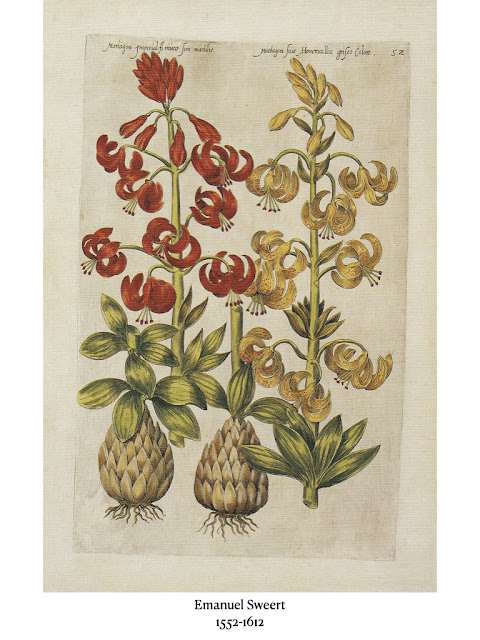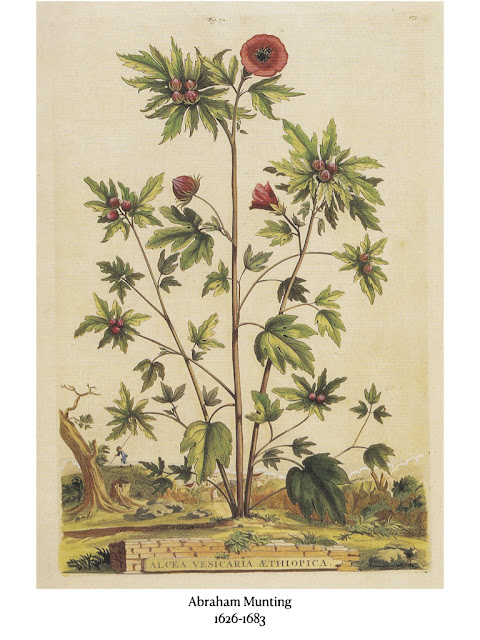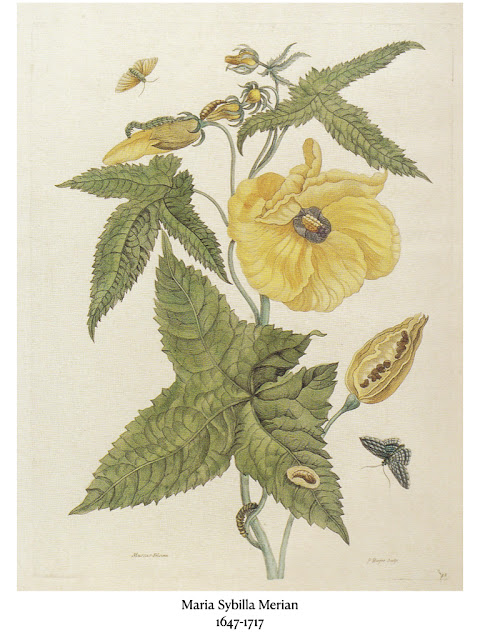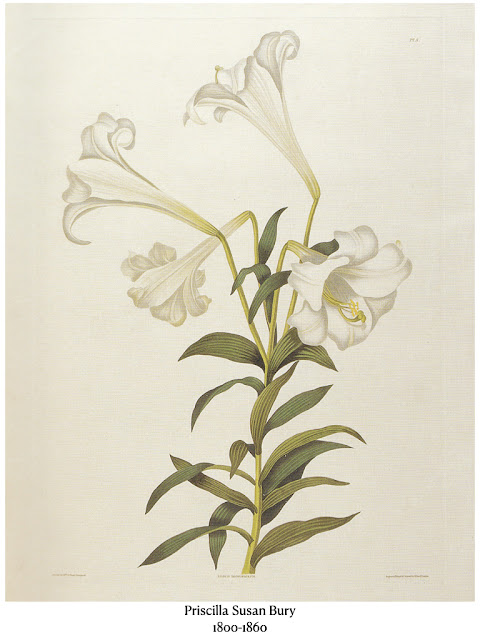Big shout out to Linda Koffenberger for the two wonderful presentation she shared with us during Open Studio.
The following two slide presentations show examples of some of the best botanical illustrations created over a 400 year period. The first presentation covers illustrations from the 1500’s and 1600’s, during a period of rapid discovery of new plants from around the world. The second covers illustrations from the 1700’s and 1800’s - the Golden Age of Botanical Art - when the best European artists combined scientific accuracy with personal expression and artistic skill to create illustrations of unmatched beauty.
Perhaps browsing through these might give you some ideas for your own illustrations.
PRESENTATION ONE
Hortus Eystettensis, published in 1613 contained 367 images of over 1000 varieties of flowering plants done by Basel Besler for Johann Konrad von Gemmingen, Prince Bishop of Eichstatt, who grew every known plant of his day. First to show plants from the Americas - including fruits, cacti took 16 years, using copper engraving plates - actual size. Arranged the plants for aesthetic reasons
Theodor de Bry was the first illustrations are the first accurate European descriptions of American Flora and Fauna and were immediately popular. These are hand-colored engravings
Emanuel Sweert worked for Emperor Rudolf II to produce a book that would serve as a reference for growers as well as a sales catalog. His florilegium contained 110 engravings depleting 500 plants. Very popular and was repeatedly reissued between 1614 and 1655.
Daniel Rabel was court painter for Maria de Medici, regent of France. He published his Theatrum Florae containing 69 precise and beautiful engravings in 1622
Jean Baptiste Monnoyer was a highly successful French painter. These are examples from his portfolio of 12 botanical engravings - all tied with a bow!
Johann Christoph Volckamer was a wealthy Nuremberg merchant who could afford to maintain hothouses for tropical plants. He borrowed the style of Giovanni Battista Ferrari but went further and added detailed landscapes. which are popular among collectors.
Abraham Munting was a Dutch botanist and medical doctor who became director of the Hortus Botanicus at Groningen at the age of 32 and served there to his death in 1683. (33 years). His Phytographia Curiosa continued 245 images published in the Netherlands numerous times between 1696 and 1713. The images were often larger than life.
PRESENTATION TWO
The 1700’s marks the advent of women painters. Merian was an entomologist and accomplished artist who lived and worked in Surinam with her daughter and published a book of prints in 1726. Her work was detailed and accurate.
Catesby, an English botanist, made two trips to North America and published three books of his illustrations - the last after his death. He was exploring North America - including North Carolina 100 years before Audubon.
Blackwell produced a book called A Curious Herbal. It was a very important text on 500 medicinal plants. She painted the plants, did the engravings and handprinted them. Her husband, a medical doctor, wrote the descriptions of the medical uses of the plants - from his prison cell. The book was financially successful and got her husband out of jail. Blackwell’s drawings exhibit the characteristic flat two-dimensional look of medicinal illustrations. Notice the rendering of the flower parts.
William Curtis was also associated with the Chelsea Physic Garden where he cultivated 6000 species of plants. His most important work - 23 years in the making - was Flora Londinensis - depicting all the plants growing in a radius of 10 miles of London. The use of large scale copper plates allowed him to illustrate the plants life size.
John Abbot was an Enlish naturalist who spent most of his life in Savannah Georgia. He was especially attracted to studying and illustrating butterflies. He knew Catesby, John Bartram and Thomas Jefferson.
These prints marked another innovation combining color printing, stipple engraving and fine hand-finishing to produce the finest illustrations to date - with highly realistic detail.
Edwards was a welshman and protege of William Curtis. Edwards drew 1600 drawing of plants between 1787 and 1815 - 28 yrs - almost 60 per yr. I have added him, mainly because he had revived the practice of painting several plants together on the same page.
And to show his solution to painting white flowers…
In contrast to Priscilla Susan Bury’s technique. Bury was a wealthy Britain who could avoid to hire Robert Havel, the Aquatint engraver for John James Audubon.
Pierre Joseph Redoute is the most famous of all botanical artists. The Raphael of Flowers. He secured royal patronage from Marie-Antoinette through Charles X. His art is the perfect synthesis of natural ability, acute observation, beauty of design and personal expression. He was a Belgium from a long line of painters. He moved toParis and became the court painter for Marie-Antoinette and continue to paint throughout the French revolution. After the revolution he became the Painter to Josephine, Napoleon’s wife. it was an idyllic time for Redoute.
He refined his stipple engraving techniques creating delicate gradation of tone. He inked the engravings and used watercolor for details. He created two breathtakingly beautiful books of prints between 1802 and 1824. He had a lavish lifestyle and died in poverty after Josephine died.
The Dutch artist Van Spaendonck was a great illustrator in his own right but perhaps his biggest claim to fame is as Redoute’s watercolor instructor. He was an accomplished painter in oil, gouache, and watercolor and a gifted teacher. He taught many of the most important 19th century painters.
John James Audubon (1785–1851) Florida Scrub-Jay (Aphelocoma coerulescens), Study for Havell pl. 87, 1829 Watercolor, graphite, pastel, and black ink with touches of gouache and selective glazing on paper, laid on card; 29 3/8 x 20 15/16 in. (74.6 x 53.2 cm) New-York Historical Society, Purchased for the Society by public subscription from Mrs. John J. Audubon, 1863.17.87
We can’t discuss famous 19th century flora painters without adding Audubon. Noted for his birds, the flora surrounding them are just as accurate and beautiful. This is an original painting done in watercolor, graphite pastel, black ink and gouache. The process of turning it into a print is a creative art in itself.
Here is an unpainted aquatint engraving of Redoute’s Geranium. to show what an engraving looks like.
Here is a comparison of the original and the print.























































No comments:
Post a Comment